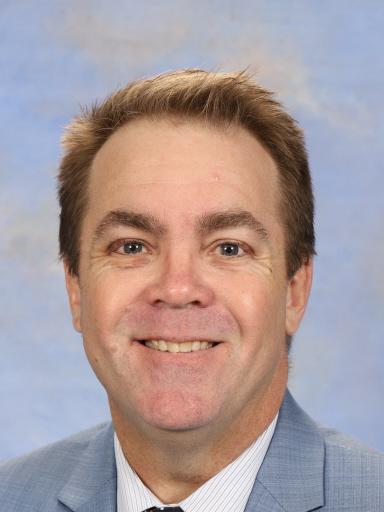PRINCIPAL'S REPORT

As we all know, mental illness is very common and thankfully the stigma around openly discussing mental health is dissipating. Statistics provided by Black Dog Institute reveal that 20% of Australians aged 16-85 experience a mental illness in any one year. The most common mental illnesses experienced by Australians are depression, anxiety and substance use disorder. According to all accumulated data, almost half (45%) Australians will experience a mental illness in their lifetime. This is higher in rural, remote and Indigenous communities.
The onset of mental illness typically occurs in adolescence, and in Australia, it is our youth who have the highest prevalence of mental illness than any other age group. Over an extended period, Mission Australia’s Youth Surveys have repeatedly demonstrated that approximately 21.2% of young people met the criteria for a probable serious mental illness. Frighteningly, 54% of people with mental illness do not access any treatment. Poor access to professional help in rural, remote and Indigenous communities further exacerbates this problem. The proportion of people with mental illness accessing treatment is half that of people with physical disorders.
All of us – students, families and staff - are all too aware of this fact. Daily, we identify and work with a number of our own students who are experiencing poor mental health and we do our very best to support them. Importantly, they are made to feel welcome, valued and cared for. Whilst we do not pretend to have the expertise to deal with all of mental illnesses suffered by those in our care, we are very keen to partner with our parents, carers and outside agencies to support our students.
This week at the College we join in R U OK? Day along with many schools and organisations across the country. The day provides opportunities for students and staff to talk about: mental health, looking out for a mate, the importance of seeking out help, and resilience.
Notwithstanding all of this, the key to mental health and wellbeing for the members of any family, community, school or workplace is having a culture where the dignity of each individual is respected, individual differences respected and celebrated they will feel more confident with the risk of suffering any mental illness minimised.
In this season of spring, this season of hope, I pray that our efforts in focusing on mental health are not just rhetoric; but truly provide new hope to those in our community, particularly our students, struggling with mental health issues.
By now, I am sure you are aware of a deeply distressing and harmful video circulating on social media this week. Yesterday, the National Suicide Prevention Adviser to the Prime Minister, Christine Morgan and the eSafety Commissioner released a joint media statement regarding this issue, urging all Australians to avoid viewing or sharing this video. Christine noted ‘content which includes explicit descriptions, images or footage of suicide, especially where methods are shown, have been linked to increases in suicidal thoughts, suicide attempts and suicide deaths.’
While I understand that children can be enterprising and that word of the video may have gone viral in some classrooms and playgrounds, I also want to balance this phenomenon with concerns around arousing curiosity to students who may not be aware of such a distressing online incident. This is particularly important with content that relates to suicide and self-harm.
Reporting harmful and disturbing online content
I urge any of you who encounter harmful and disturbing content online, to report it immediately to the social media platform they’ve seen it on first, and then to eSafety at www.esafety.gov.au/report/illegal-harmfulcontent .
Providing support for your school communities
Young people may feel scared, embarrassed, or confused about having seen inappropriate content, so it is important to communicate in an open and supportive manner. They may also fear that adults may not be able to help them or fear reprisals like ‘device denial’ if they do share harmful content they have been exposed to online. In addition to the support services that your school already offers to students, you can also make use of specialist services including Kids Helpline, headspace and Beyond Blue.
Advice for supporting young people who have been exposed to harmful content
Young people can respond differently to highly distressing events. Some will seek immediate assistance from their parents, carers or teachers, while others may be less inclined to do so. It is important for young people to know that there is no ‘right’ way to respond to upsetting or disturbing online events.
Young people also need to know that they are not alone, and help is available from trusted adults, friends and professional support services.
You can help your children through this experience by providing a safe space where they can talk about their feelings. As parents and carers you need to encourage positive connections with friends and extended family through other activities and interests.
Tips to give parents to help limit young people’s exposure to harmful content online:
- Engage in your child’s online activities – ask what apps, sites and games they are using and make sure they’re age appropriate
- Use parental controls on devices to help limit what your child is exposed to
- Help them report and block upsetting content they see on social media sites or apps
- Let them know they can come to you about anything upsetting they see online.
Prevention and resilience
We know that the delivery of effective, evidence-based online safety education is one practical way to protect Australian children online.
I really encourage you to explore the advice and resources on the national online safety hub - esafety.gov.au.
Paul Humble | Principal

